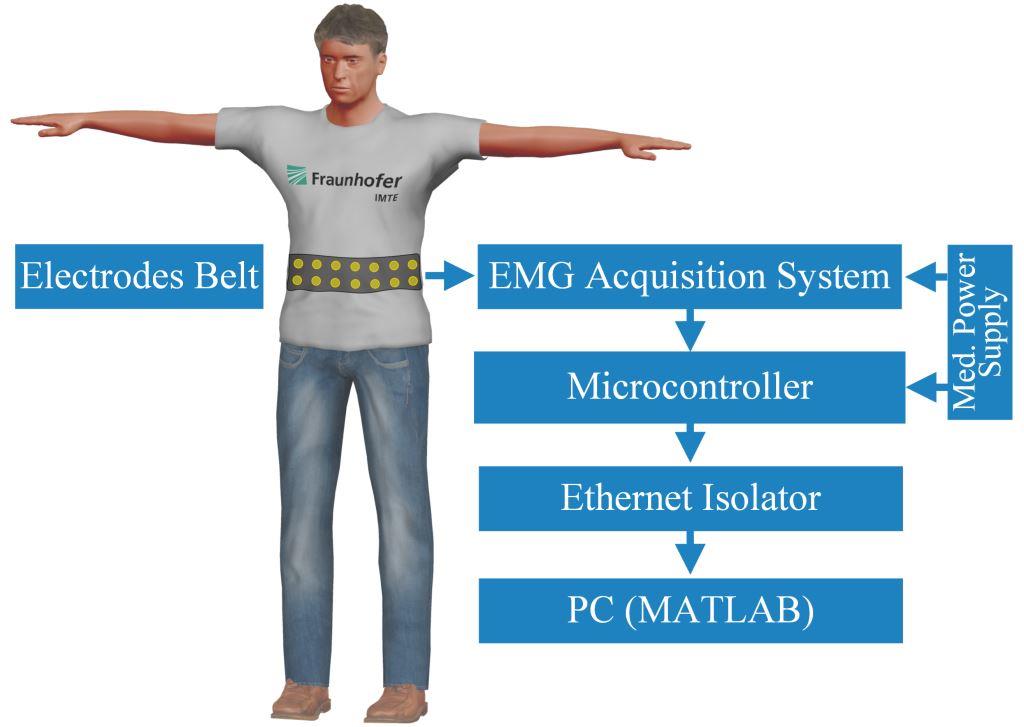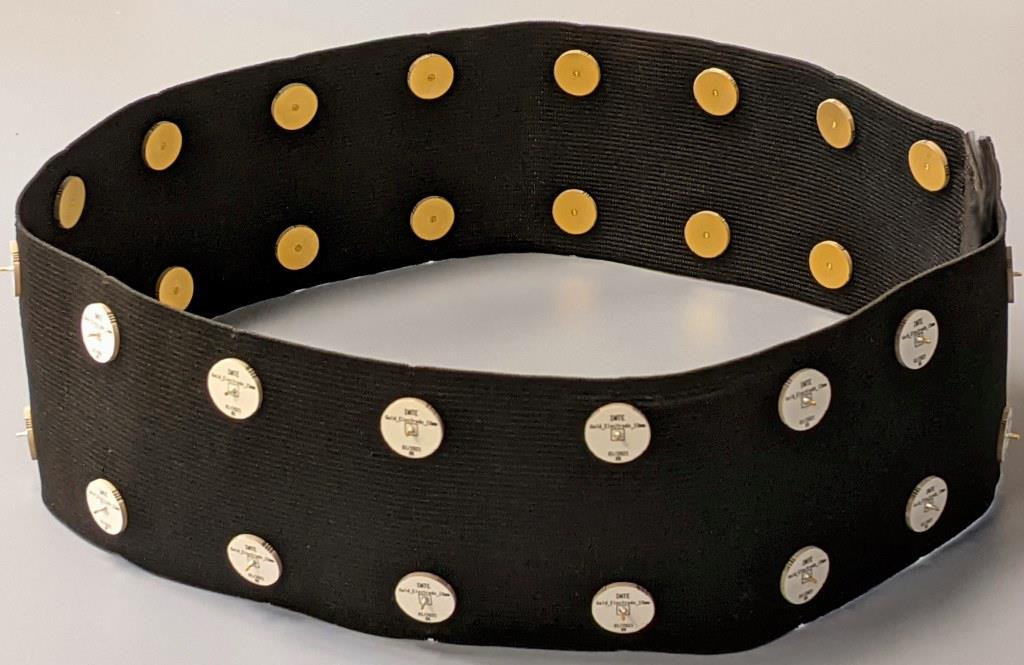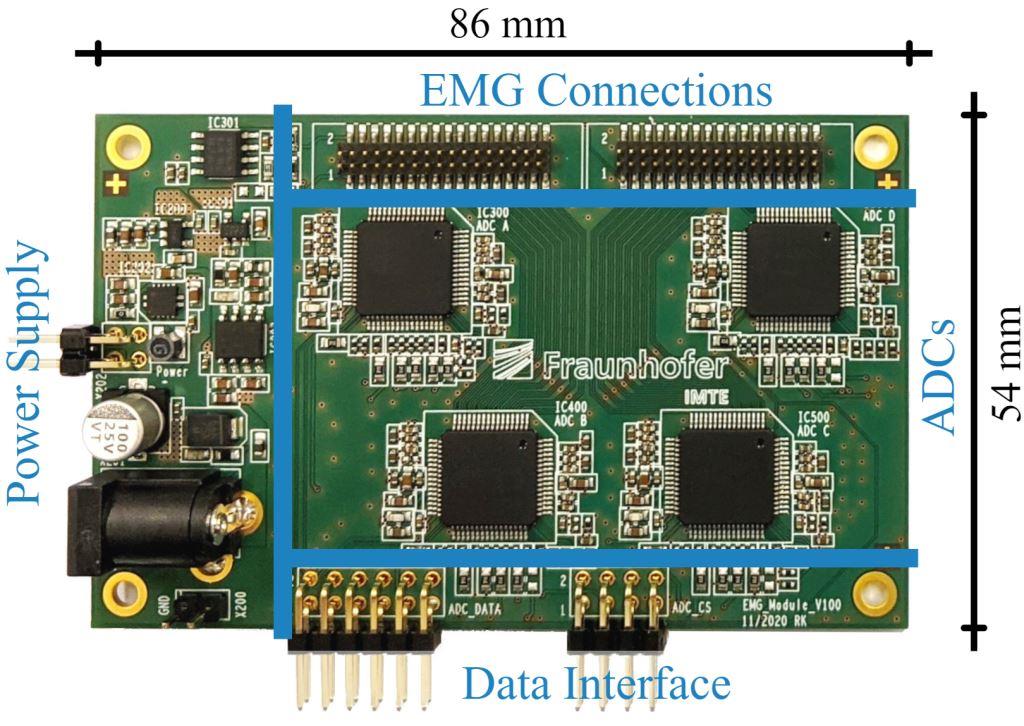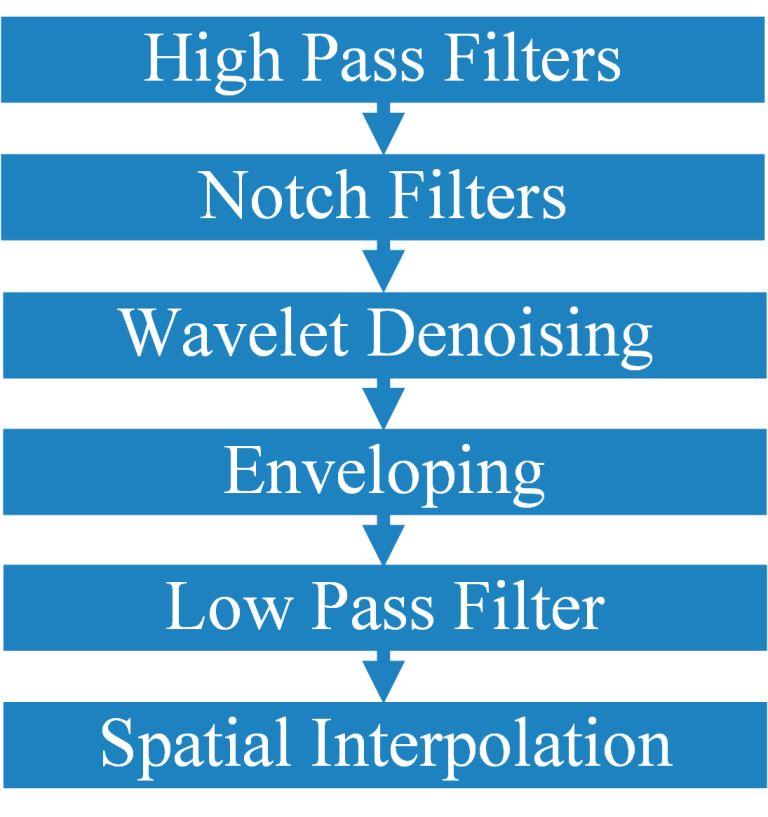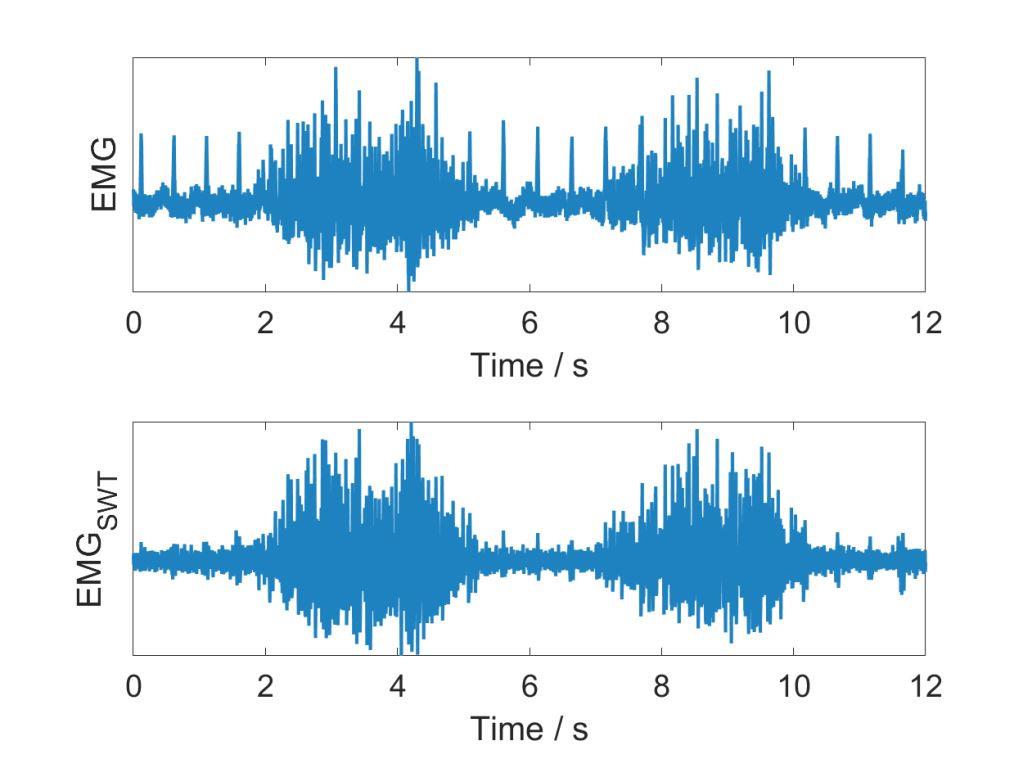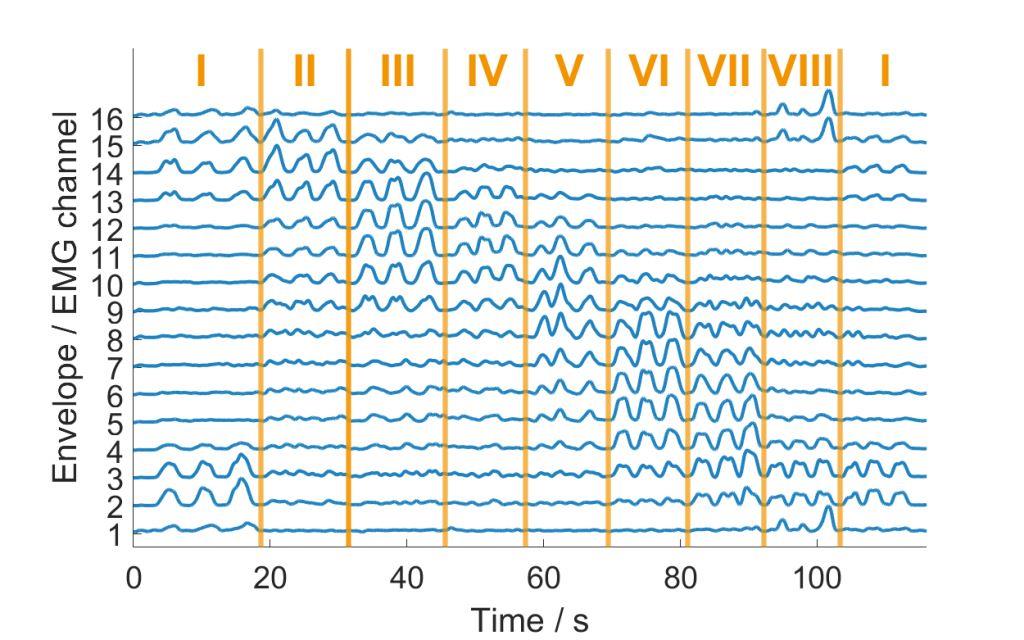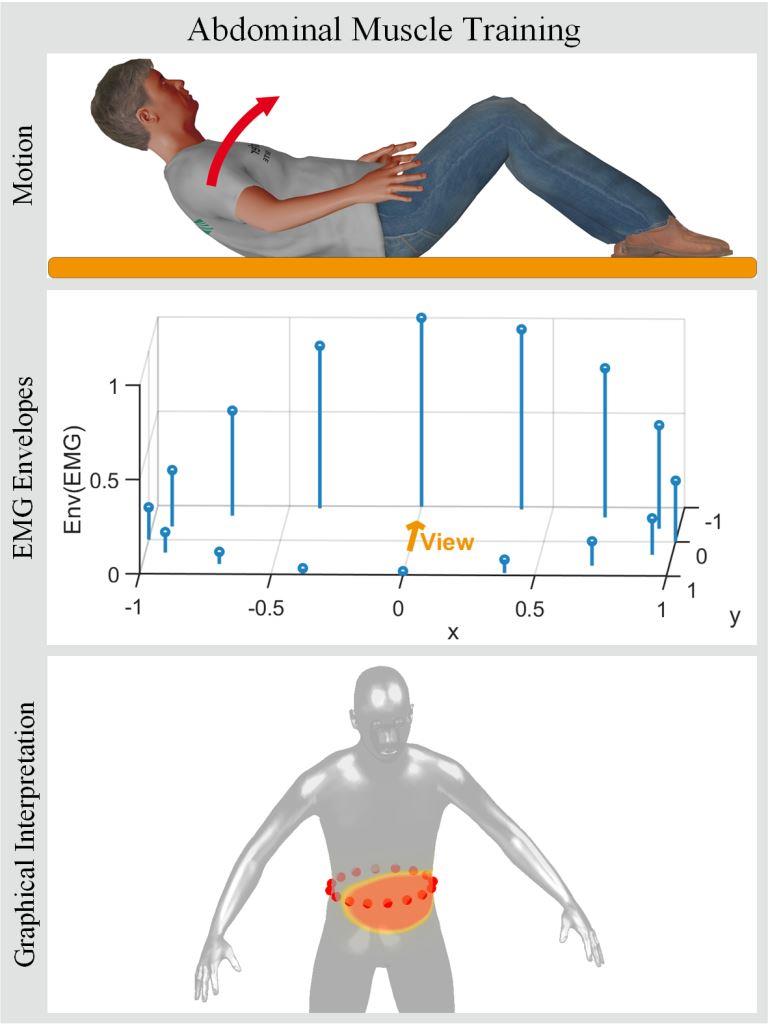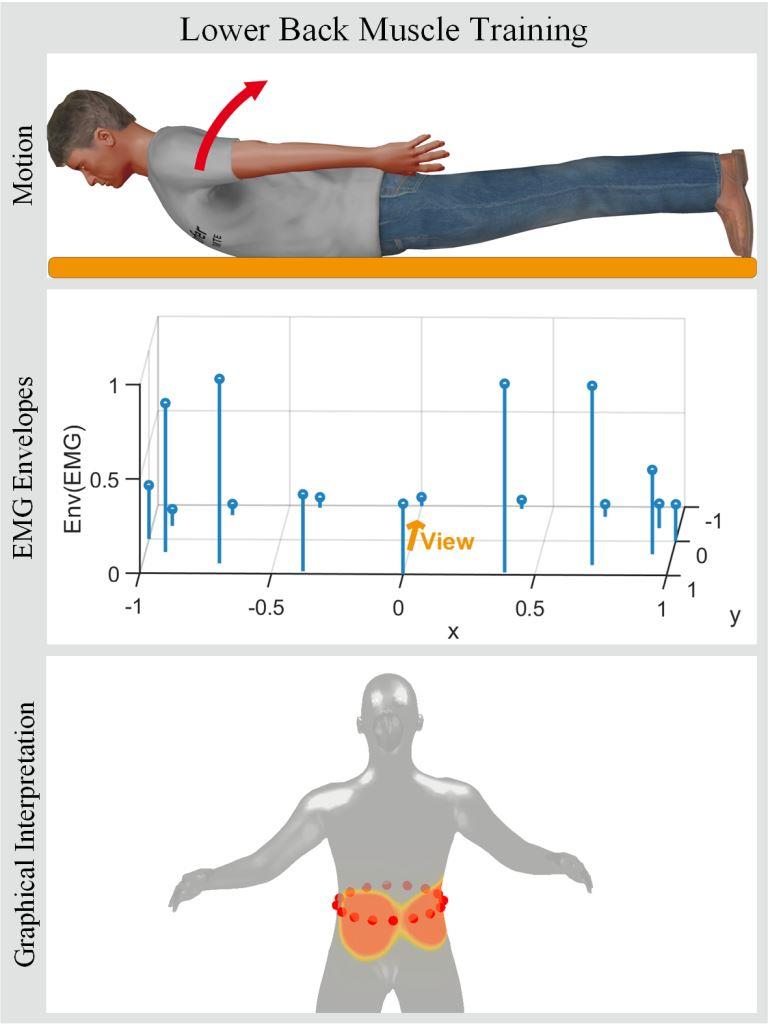R. Kusche, J. Graßhoff, A. Oltmann, L. Boudnik and P. Rostalski, DGBMT Annual Conference on Biomedical Engineering, Hannover, 2021 / Current Directions in Biomedical Engineering, 7, 2, 2021; DOI: 10.1515/cdbme-2021-2041; [PDF]
Abstract: EMG is an established method to acquire the action potentials of contracted muscles. Although commercial EMG systems are available and it is one of the most researched biosignals, it has never become widely used in rehabilitation or fitness training monitoring. The reasons are technical challenges of wearable EMG systems regarding electrode placement, motion artefacts and the complex connectivity of multi-channel EMG measurements. We address this problem for the lower back and abdominal musculature, through a novel dry electrodes belt, multi-channel high density EMG circuitry and problem-specific signal processing. The subject can easily strap the dry electrodes belt around himself which provides 16 EMG channels. Interferences from the ECG and motion artefacts are reduced by a stationary wavelet decomposition. Afterwards, an inter-channel filter is applied to increase the robustness of the signals. Subject measurements during different kinds of typical abdominal and lower back training exercises were performed wearing the novel dry electrodes belt. The results show the possibility of robust EMG measurements from the lower back and abdominal muscles by utilizing the gathered redundancy, appropriately. The additional information obtained via the multi-channel EMG circuitry and spatial oversampling can be used to address current problems of EMG applications. It combines the advantages of robustness and the capability of using comfortable dry electrodes. Therefore, the proposed measurement method for acquiring spatial information about the muscle contractions from the lower trunk can be used for rehabilitation or fitness training monitoring.
